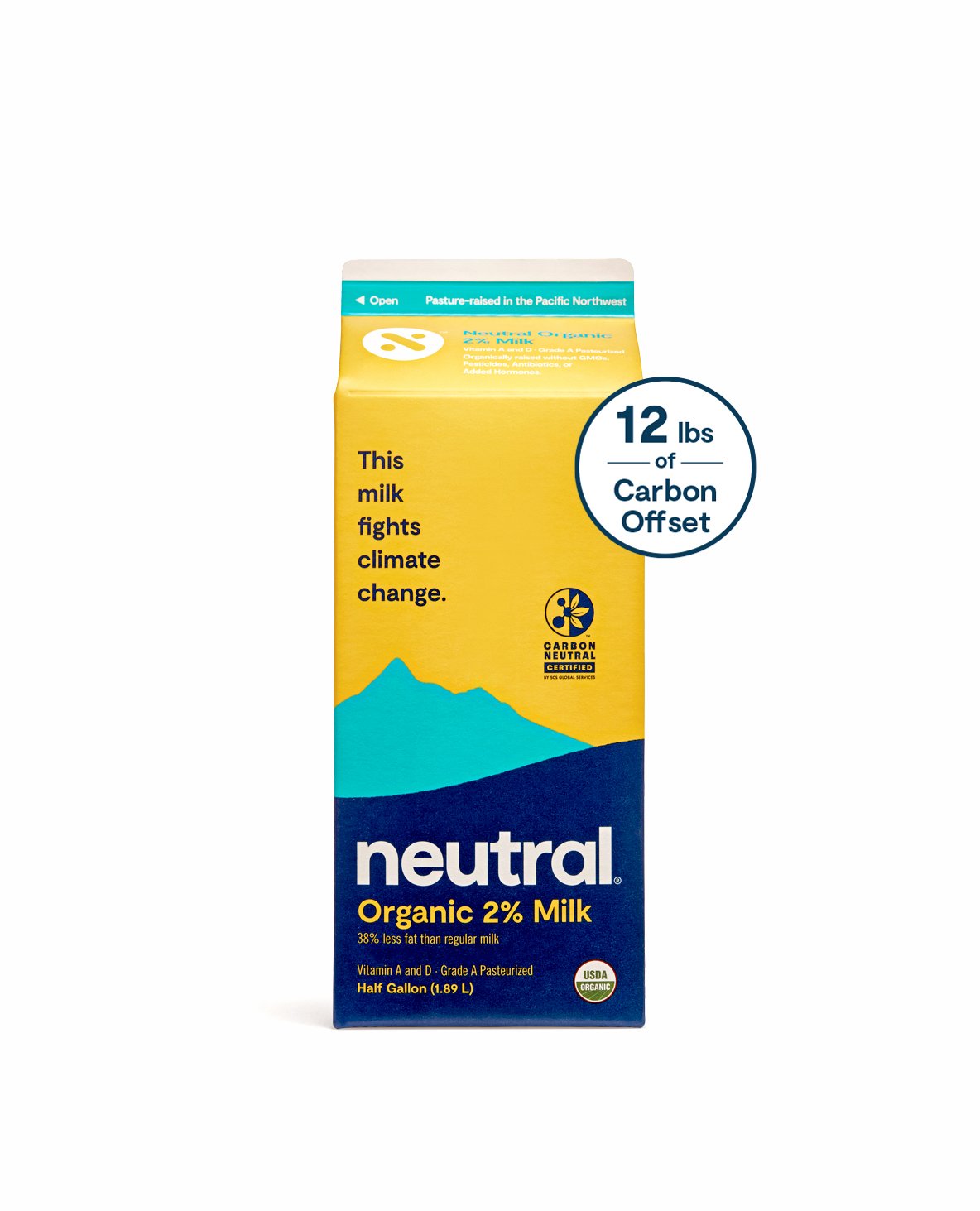We can't find the internet
Attempting to reconnect
Something went wrong!
Hang in there while we get back on track
When you buy through links on our site, we may earn an affiliate commission. Learn more
milk
By Maggie McIntyre
I’m not sure if you’ve “herd”, but the dairy industry has received some backlash over animal cruelty, sustainability of large-scale industrial farms, and corporate consolidation that’s pushing smaller farms out of business. There has also been a nationwide “moo”-vemet towards plant-based milk alternatives, but cows milk still remains a staple for many Americans because of its nutritional value. When purchasing dairy milk, it’s “udderly” important to think about the impact of the industry to ensure you are making mindful choices.
Sustainability Concerns in the Milk Industry
Raising dairy cows takes up a considerable amount of space for grazing and feeding, requiring between 1.5 and 2 acres of land per cow. Livestock across industries takes up about 80% of agricultural land and the production of soy, which is a primary component of livestock feed, is linked to deforestation in areas like the Amazon. This land use takes away from the carbon sequestration of forests, diminishing their function as carbon sinks that capture and store carbon from the atmosphere.
The water and carbon footprint of dairy is also a point of concern. It takes over 140 gallons of water to produce a single gallon of milk, according to the Innovation Center for U.S. Dairy. Most of this water consumption is attributed to crop irrigation for feed production but some of it is consumed directly by the dairy cows, and some is required for processing. The dairy industry also emits a lot of greenhouse gasses—approximately 2% of total US GHG emissions. The US agricultural industry is the primary emitter of methane, which is much better at trapping solar radiation than carbon dioxide, making it 28 times more impactful on earth’s warming atmosphere. Cattle themselves produce methane every time they release gasses from their bodies. Aside from methane emission, producing 1 gallon of milk generally releases 17.6 pounds of carbon dioxide into the atmosphere.
One other concern related to the milk industry is pollution. Manure management for cattle often results in air and water pollution, leading to health and environmental concerns for areas surrounding dairy farms.
Plant-based milk alternatives like soy milk, rice milk, oat milk or almond milk have a much smaller water and carbon footprint. They are becoming much more popular in the United States, purchased by 41 percent of households. Oat milk is one of the most sustainable plant-based milks because oats require less water to grow and the production process is not as energy intensive as it is for other milk varieties. Soy milk is also a good alternative, requiring a third of the water used for dairy milk. Almond milk is the most purchased milk alternative but a single almond requires 12 liters of water to produce, making it a less sustainable choice, but still better than dairy milk.
Given the nutritional benefits of cows milk and its use in cooking and baking, if you choose to purchase dairy, there are ways to make sure you are choosing the more sustainable brands.
What to Look For
-
USDA Organic Organic milk signifies pasture-raised cattle that have access to the outdoors year-round and that have been fed 100% organic feed grown without pesticides, which is more ethical from an animal welfare and environmental standpoint.
-
Local Locally-sourced milk is often a great way to ensure you are consuming milk sustainably. When transport costs and distance are cut to deliver locally, there is less of a carbon footprint. When you shop locally you can also ensure the dairy you purchase from shares the same values you do when it comes to food production. With a shorter supply chain, buying locally can also mean fresher milk with a longer shelf life leading to less food waste.
-
Grass Fed Livestock When dairy cows are grass-fed, it means they eat a foraged-based diet. Instead of grains, cows are eating grasses, legumes and cereal grains in vegetative states. This lifestyle for cattle often results in better animal welfare and even has environmental benefits because the cows are less reliant on feed which has a bigger carbon and water footprint. Pasture-raised cattle can also contribute to better soil health and water quality as they contribute to natural fertilization.
What to Avoid
-
Factory Farmed Cows that are raised in factories spend much if not all of their lives inside industrial-scale farm systems. This infrastructure of conventional dairy farming often involves high inputs of energy, water, and synthetic fertilizers to produce large amounts of feed for the cows which has negative environmental impacts. Factory farms are also notorious for their poor treatment of animals and is often why people choose to go vegan.
-
Grain Fed As noted above, growing the soy and corn that are the main ingredients in livestock feed is the main contributor to the high water usage associated with the dairy industry. Growth of these products also requires synthetic fertilizers which can lead to poor soil health and water pollution.
Sources
- https://www.nevadamilk.com/wp-content/uploads/2020/08/dairysenvironmentalfootprintpdf.pdf.pdf
- https://ourworldindata.org/environmental-impact-milks
- https://www.epa.gov/ghgemissions/overview-greenhouse-gases
- https://www.ethicalconsumer.org/food-drink/plant-vs-dairy-comparing-their-climate-impacts
- https://www.ams.usda.gov/grades-standards/organic-standards
- https://www.usdairy.com/getmedia/52cb4d40-bea5-4b97-86ae-0cf806146a43/2020-US-Dairy-Sustainability-Report-Restatement.pdf?ext=.pdf
- https://www.sciencedirect.com/science/article/pii/S0958694612001975
- https://gfi.org/marketresearch/
- https://www.cambridge.org/core/journals/journal-of-agricultural-and-applied-economics/article/are-plantbased-analogues-replacing-cows-milk-in-the-american-diet/F78AE2E32B77214BD3D26A060EC70451
- https://climatesociety.ei.columbia.edu/news/how-oat-milk-can-help-save-environment
Want more? Become an Intentful Consumer!
Get updates on new research and products. Upvote, comment, and add suggestions to help others.




